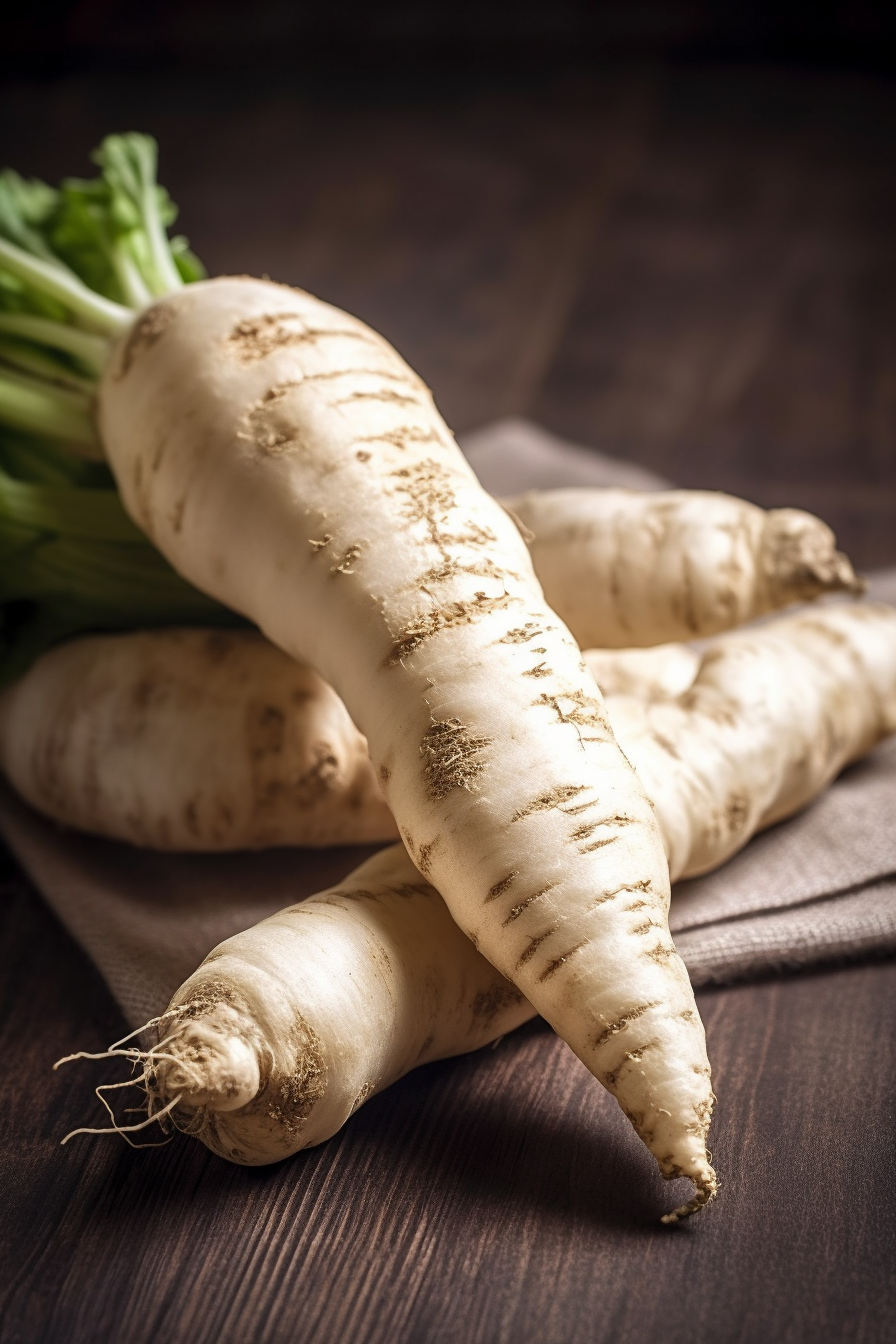Make your Passover Seder complete with homemade Marror
Follow this guide to learn how to make it and add a personal touch to your celebration.
Maror is a bitter herb traditionally eaten during the Passover Seder to represent the bitterness of slavery in Egypt. The most common herb used for Maror is horseradish. Here’s a recipe for making the best Maror for Passover.
Traditionally nothing is added to the (bitter herbs) shredded horseradish / Marror Isn’t eaten with romaine lettuce
Ingredients:
- Fresh horseradish root
- White vinegar (Imitation)
- Salt
- Sugar
Instructions:
- Wash the horseradish root thoroughly under running water.
- Peel the horseradish root and cut it into small pieces.
- Place the horseradish pieces into a food processor or blender.
- Add 1/4 cup of Imitation white vinegar, one teaspoon of salt, and one teaspoon of sugar to the food processor or blender.
- Pulse the horseradish mixture until it is finely grated and well combined.
- Taste the Maror and adjust the seasoning if necessary by adding more salt, sugar, or Imitation vinegar to taste.
- Transfer the Maror to a glass jar with a tight-fitting lid and refrigerate until ready.
Note: The longer the Maror sits in the fridge, the more potent it will become. You can make the Maror up to two weeks ahead of time for maximum flavor. When serving, be sure to use a small amount of Maror at a time, as it is quite potent and can be overwhelming in large amounts.

What does Maror represent?
Maror, the bitter herb eaten during the Passover Seder, represents the bitterness and suffering the Jewish people experienced during their enslavement in ancient Egypt. It serves as a reminder of the harshness and oppression the Jewish people endured before being liberated by Moses and leaving Egypt for the Promised Land. By eating the Maror, Jews acknowledge and remember the suffering of their ancestors and express gratitude for their freedom and redemption. The Maror also symbolizes the importance of remembering and acknowledging the suffering of others and the obligation to work toward justice and freedom for all people.
What is Rabbi Hillel’s sandwich on Passover?
Rabbi Hillel sandwich, also known as the Hillel sandwich or the Korech sandwich, is a symbolic sandwich eaten during the Passover Seder. The sandwich is named after Rabbi Hillel, a famous Jewish scholar who lived during the time of the Second Temple in Jerusalem.
You make the sandwich by placing a mixture of bitter herbs, usually horseradish, and charoset (a sweet combination of chopped apples, nuts, wine, and spices) between two pieces of matzo. The matzo represents the unleavened bread the Jewish people ate when they left Egypt hastily. In contrast, the bitter herbs and charoset represent the bitter-and-sweet experiences of slavery and freedom.
The Rabbi Hillel sandwich is typically eaten during the Seder after eating the Maror (bitter herbs) and before the main meal. It is a symbolic reminder of the complex and intertwined nature of suffering and redemption and the importance of recognizing life’s bitterness and sweetness.
Ingredients:
- Two pieces of matzo
- Bitter herbs, such as horseradish or romaine lettuce
- Charoset (a mixture of chopped apples, nuts, wine, and spices)
Instructions:
- Place the bitter herbs and charoset in separate bowls.
- Break the matzo into two equal-sized pieces.
- Take one piece of matzo and spread a layer of bitter herbs on top.
- Add a layer of charoset on top of the bitter herbs.
- Place the other piece of matzo on top of the charoset to form a sandwich.
- Repeat with the remaining matzo and fillings to make a second sandwich.
- Serve the Rabbi Hillel sandwiches as a symbolic reminder of the story and themes of the Passover Seder.
Note: You can adjust the amounts of bitter herbs and charoset to your liking. Some people prefer to use romaine lettuce instead of horseradish for the bitter herb component of the sandwich. You can also experiment with different charoset recipes to find one you like best.
| Preparation time: 5 Minutes | Feeds: 8 People |

Responses